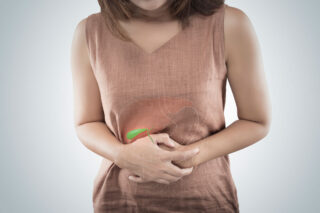
The Bariatric and Hernia Institute, PC – Greenbelt
7500 Greenway Center Drive
Suite #1120
Greenbelt, MD 20770
The Bariatric and Hernia Institute, PC – Silver Spring
10313 Georgia Avenue
Suite #307
Silver Spring, MD 20902

More Weight Control, Nutrition & Exercise Articles
Gallstones: A Common Cause For Abdominal Pain

Gallstones are like small pebbles or stones that form within the gallbladder. They are typically made up of cholesterol or bile salts. The gallbladder is a sac-like organ on the right side of the abdomen. The gallbladder is connected to the liver, drains into the intestine and functions in digestion.
Gallstones are often present without symptoms. When symptoms develop, it is often in the form of abdominal pain located on the right side of the abdomen under the rib cage. Pain can often radiate around to the back and to the right shoulder. Associated symptoms may include nausea, vomiting, or abdominal bloating. Symptoms are often aggravated by meals especially fatty or greasy meals.
The frequency of abdominal pain varies. Pain may be sporadic occurring infrequently, it may be intermittent occurring on a frequent and predictable basis, or it can be constant occurring almost daily. The pain typically occurs after meals when the gallbladder is contracting. At other times, the pain may be present due to underlying inflammation of the gallbladder regardless of meals.
The pain of gallstones can vary in severity from mild pain to severe pain. For many people, the pain is mild and tolerable. In other instances, the pain can be severe and debilitating. It can be severe enough to warrant hospitalization. Gallstones can also lead to other problems that can be painful as well. Acute inflammation of the gallbladder may cause severe pain leading to hospitalization and urgent surgery. An obstruction of the ducts leading from the liver may occur and if there is associated infection, patients may have pain, fever and jaundice. Gallstones can also affect the pancreas leading to pancreatitis with associated abdominal and back pain accompanied by vomiting. Many of these complications require hospitalization for management.
Gallstones are diagnosed using abdominal imaging studies such as abdominal ultrasound or CT scan. At times, they are diagnosed during studies done for something else.
Management of gallstones can be conservative with observation if there are no associated symptoms and they were diagnosed incidentally. Recommendations typically include avoidance of fatty or greasy meals to limit occurrence of symptoms. Medications have not been proven effective in eliminating gallstones. If symptoms are presents then the management is traditionally a minimally invasive surgery to remove the gallbladder and the stones within. Management is typically individualized based on the patient, the clinical presentation, and the patient’s health status.
Other Articles You May Find of Interest...
- Ten Lifestyle Habits and Practices for a Healthier Family
- When to Reach Out for Support: Navigating Food Fears with the Help of an Eating Disorder Dietitian
- Five Reasons to run a marathon: Get your trainers on…
- MAY MARKS CELIAC AWARENESS MONTH
- Lifestyle Changes To Lower Cholesterol
- Bariatric Surgery and Sleep Apnea
- Let’s Get Physical: Making Physical Activity a Part Of Your Family Life

















